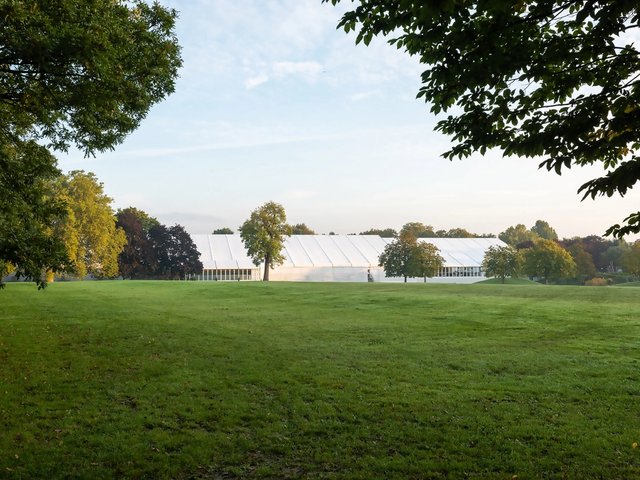When the National Galleries of Scotland ranked second only to the Sydney Opera House among cultural institutions surveyed for a study on environmental sustainability progress published by the University of Lausanne last year, there was little in the way of self-congratulatory fanfare at the 166-year-old Edinburgh institution.
The Lausanne study, which surveyed and ranked 206 leading museums, theatres and opera houses around the world, examined environmental sustainability—with criteria such as contribution to biodiversity and fighting climate change, energy use and waste—and social sustainability, with categories such as diversity and inclusion, access and learning, and inspiration. Of the four British arts organisations among the top 10, the National Galleries of Scotland scored best.
“It felt good, but we didn’t want to publicise it,” says Charlotte Gardiner, the sustainability officer at the National Galleries of Scotland. “We were much more interested in knowing how we had got to that level.”
In a café of the main building on the Mound in the centre of the Scottish capital, Gardiner sits next to a counter stocked with drinks in recyclable glass bottles. Food is sourced from local suppliers. All this goes almost without saying—but as the report made clear, every section of an organisation has to be involved in improving sustainability in all its aspects; energy use, waste tactics, education policies and inspiring the public being just a few of the issues.
A properly connected environmental plan, with engagement not only from sustainability staff but also others at all levels, was identified by the National Galleries as key to a successful strategy.“We’ve got an organisational plan, with a steering group that meets quarterly,” Gardiner says. “And it’s a plan that’s developing all the time.”
Sustainability is everyone’s responsibility
She underlines the importance of sustainability being the work of everyone, rather than a dedicated few. “It’s got to happen across the whole organisation—for most people it’s not part of their job so essentially they’re volunteering their time to learn about these things,” she says. Her particular interest is behaviour change; encouraging new patterns regarding, for example, travel or waste management. “It’s about having a lot of conversations and identifying barriers to change. Most people are on board with the messages, but everyone is busy and we look at how to make things easy for people.”
The National Galleries began recording their carbon use since 2009. The three main goals in the plan, Gardiner explains, are: reaching net zero emissions; protecting the collection in a more sustainable way with reduced use of plastic and transport; and engaging and inspiring people both internally and externally. She highlights a 2024 photography exhibition, Before and After Coal, which involved engagement with the community and schools and explored, among other things, the lasting impact of coal on the environment.
Where major change is afoot, sustainability is a priority from the earliest moment. “We’ve got plans for a storage centre that will be open to the public, and it will be very environmentally friendly in terms of emissions,” Gardiner says. “We’re also planning a gallery refurbishment and sustainability is right there at the centre of it.” The new facility—the Art Works—will be part of the wider regeneration of the Granton Waterfront brownfield site in Edinburgh and encompasses storage, conservation facilities and a community space with public access. When completed, it will be the largest building in the UK designed to the “Passive House” environmental standard: buildings with this certification are designed to hardly need heating at all: passive heat sources such as the sun, human occupants and heat from extract air cover most heating requirements. The Art Works will have triple glazing and will use renewable technology including heat pumps and a roof-mounted photovoltaic device to convert sunlight into instant electricity.
Martin Müller, the co-author of the Lausanne report, says that while many arts institutions have procedures and goals, few translate these into outcomes. “They have plenty of initiatives from the green team, recycling or whatever, but they’re a one-off, they are not institutionalised, management doesn’t support it and it dies off after a while.”
In contrast, the National Galleries of Scotland as an institution has been prepared to do what might be seen as unglamourous, behind-the-scenes work—“not headline-grabbing, but it matters”—to get everyone on board, he says.
“The sustainability transition is a marathon, not a sprint,” Müller says. “You need to plan for the long term, and you don’t want to be out of breath after the first few kilometres.”






